Mesmerizing Mosaics: Discovering the Beauty of Turkish Tile Art
Nestled within the rich tapestry of Turkish culture lies a hidden gem of artistic expression—Turkish tile art. From the magnificent palaces of Istanbul to the serene mosques scattered across the country, the mesmerizing mosaics adorning these architectural wonders captivate the hearts and minds of all who behold them. This blog post will take you on a journey to explore the intricate beauty and historical significance of Turkish tile art, shedding light on its origins, techniques, and the enduring legacy it has left on the art world.
The Origins of Turkish Tile Art:
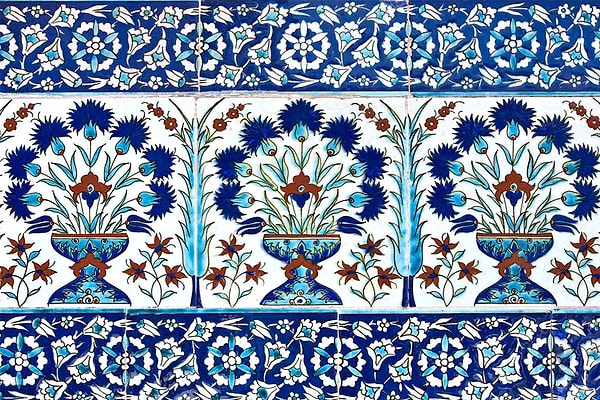
The history of Turkish tile art can be traced back to the Seljuk and Ottoman empires, where it flourished as an integral part of architectural decoration. Inspired by Persian and Central Asian influences, Turkish tile art emerged as a unique fusion of various artistic traditions, incorporating geometric patterns, floral motifs, and calligraphic elements.
Techniques and Materials:
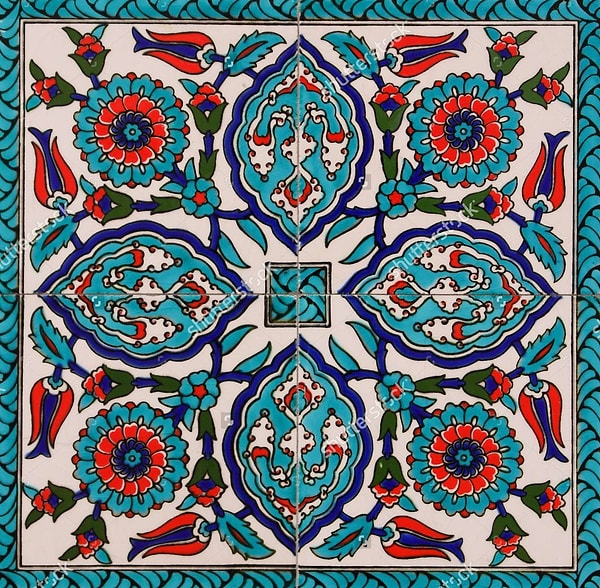
Turkish tile art is characterized by its meticulous craftsmanship and vibrant color palette. Traditional techniques such as cuerda seca (dry cord) and underglaze painting are employed to achieve the desired effects. These techniques involve the precise application of colored glazes onto the surface of the tiles, followed by firing at high temperatures to fix the colors permanently.
The materials used in Turkish tile art are also crucial to its allure. High-quality clay is carefully selected and shaped into tiles or ceramic plates, providing a sturdy canvas for the artists' creations. The glazes, made from a combination of minerals and pigments, produce a dazzling array of colors, ranging from deep blues and vibrant greens to warm reds and golden yellows.
Symbolism and Themes:
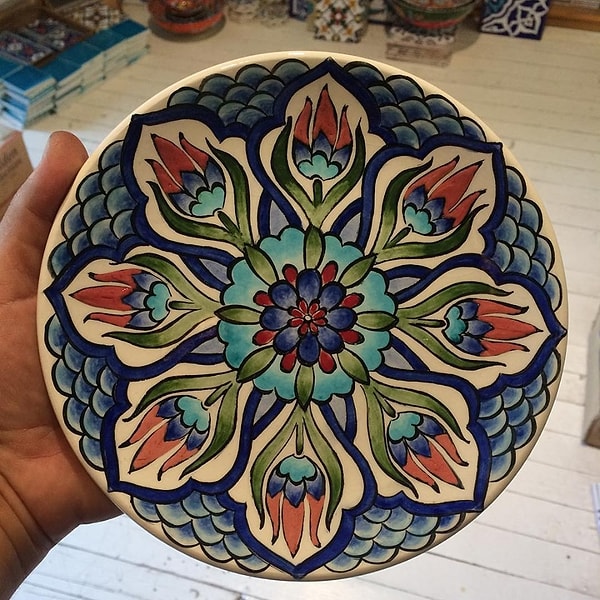
Turkish tile art is not only a visual delight but also a storytelling medium. The designs often incorporate symbolic elements and thematic motifs that hold deeper meanings. Geometric patterns, such as stars, rosettes, and hexagons, represent order and harmony in the universe. Floral motifs, including tulips, carnations, and roses, evoke the beauty of nature and symbolize growth and rebirth. Calligraphic inscriptions, featuring verses from the Quran or poetic expressions, add a spiritual dimension to the artwork.
Architectural Masterpieces:
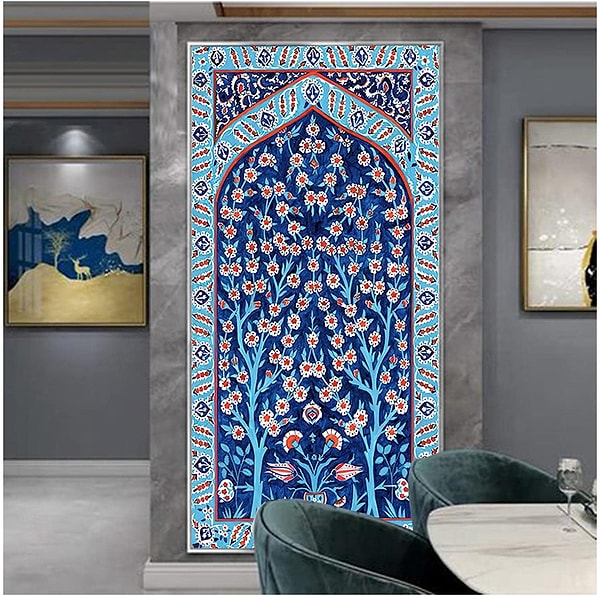
Turkish tile art finds its most splendid expression in the architectural masterpieces that dot the Turkish landscape. The Topkapi Palace in Istanbul, the Blue Mosque (Sultan Ahmed Mosque), and the Rüstem Pasha Mosque are just a few examples of the breathtaking structures adorned with exquisite tile work. Each mosaic tells a story, transforming these buildings into living canvases that breathe life into Turkish history and culture.
Preservation and Revival:
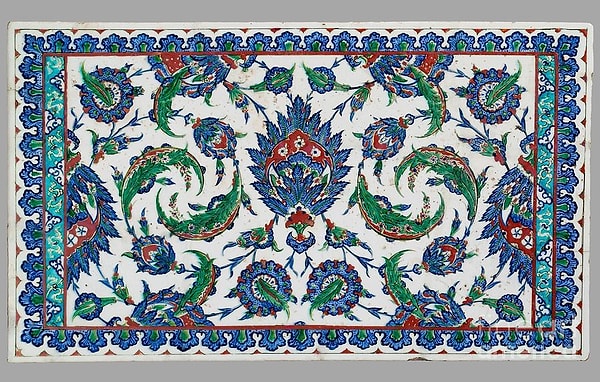
Preserving the legacy of Turkish tile art is a continuous endeavor. Over the years, restoration projects and dedicated artisans have worked tirelessly to repair and maintain the intricate tile work in historical sites. Additionally, there has been a resurgence of interest in traditional tile-making techniques, with contemporary artists embracing the art form and infusing it with new interpretations.
Appreciating Turkish Tile Art:
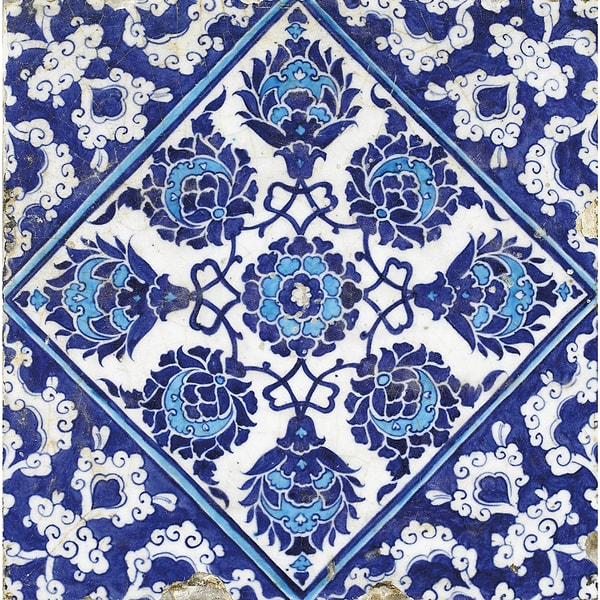
To truly appreciate the beauty of Turkish tile art, one must explore it firsthand. Visitors to Turkey have the opportunity to marvel at these masterpieces in their original settings, witnessing the interplay of light and color that brings the tiles to life. Museums and cultural centers also showcase collections that offer a glimpse into the rich heritage of Turkish tile art.
For those unable to visit Turkey, books, documentaries, and online resources provide a virtual window into the world of Turkish tile art. Studying the history, techniques, and symbolism behind the artwork deepens our understanding and allows us to recognize the immense skill and creativity that goes into every tile.
Turkish tile art is a testament to the rich artistic heritage of Turkey, showcasing the skill, craftsmanship, and cultural significance embedded in each mosaic. F
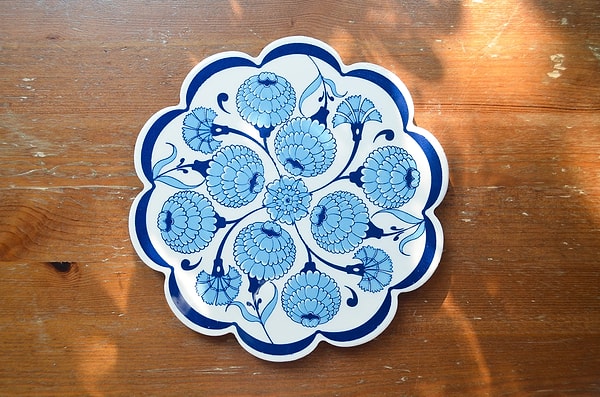
From its origins in the Seljuk and Ottoman empires to its continued presence in architectural wonders, Turkish tile art continues to inspire and captivate people around the world.
As you delve into the world of Turkish tile art, let your senses be enveloped by the vibrant colors, intricate designs, and rich symbolism. Take the time to appreciate the dedication and talent of the artists who have meticulously crafted these timeless creations. Explore the historical sites adorned with breathtaking mosaics, and embrace the stories they tell through their motifs and patterns.
In a world where mass production often takes center stage, Turkish tile art serves as a reminder of the value of craftsmanship and the beauty of handmade creations. It invites us to slow down, appreciate the finer details, and immerse ourselves in a world where art and architecture intertwine.
So, whether you find yourself standing in awe before the grandeur of the Blue Mosque, exploring the tiled courtyards of the Topkapi Palace, or simply admiring the intricate patterns in a museum exhibit, let the mesmerizing beauty of Turkish tile art transport you to a realm of artistic wonder and cultural significance.
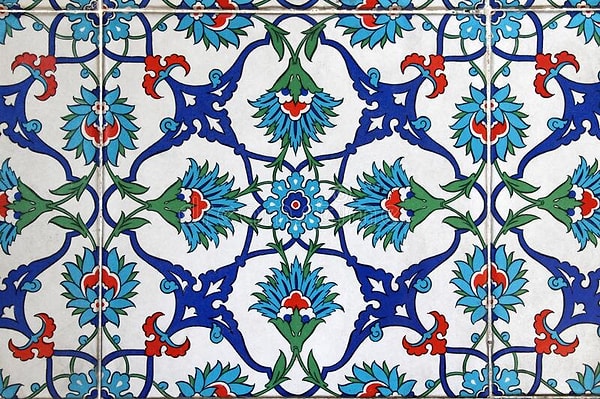
Let us embrace this captivating art form, honoring its historical roots, and supporting its preservation for future generations to appreciate. Turkish tile art is a testament to the artistic legacy of a nation, inviting us to embark on a journey of discovery and awe.
In conclusion, Turkish tile art stands as a testament to the exquisite beauty, skilled craftsmanship, and cultural heritage of Turkey. It captures the essence of the country's rich history and artistic traditions, inviting us to immerse ourselves in a world of vibrant colors, intricate patterns, and symbolic storytelling. Whether experienced firsthand in architectural masterpieces or admired through various resources, Turkish tile art leaves an indelible impression on all who encounter it, offering a window into the artistic soul of a nation.
What do you think about the Turkish tile art? Tell us in the comments!
Keşfet ile ziyaret ettiğin tüm kategorileri tek akışta gör!


Send Comment